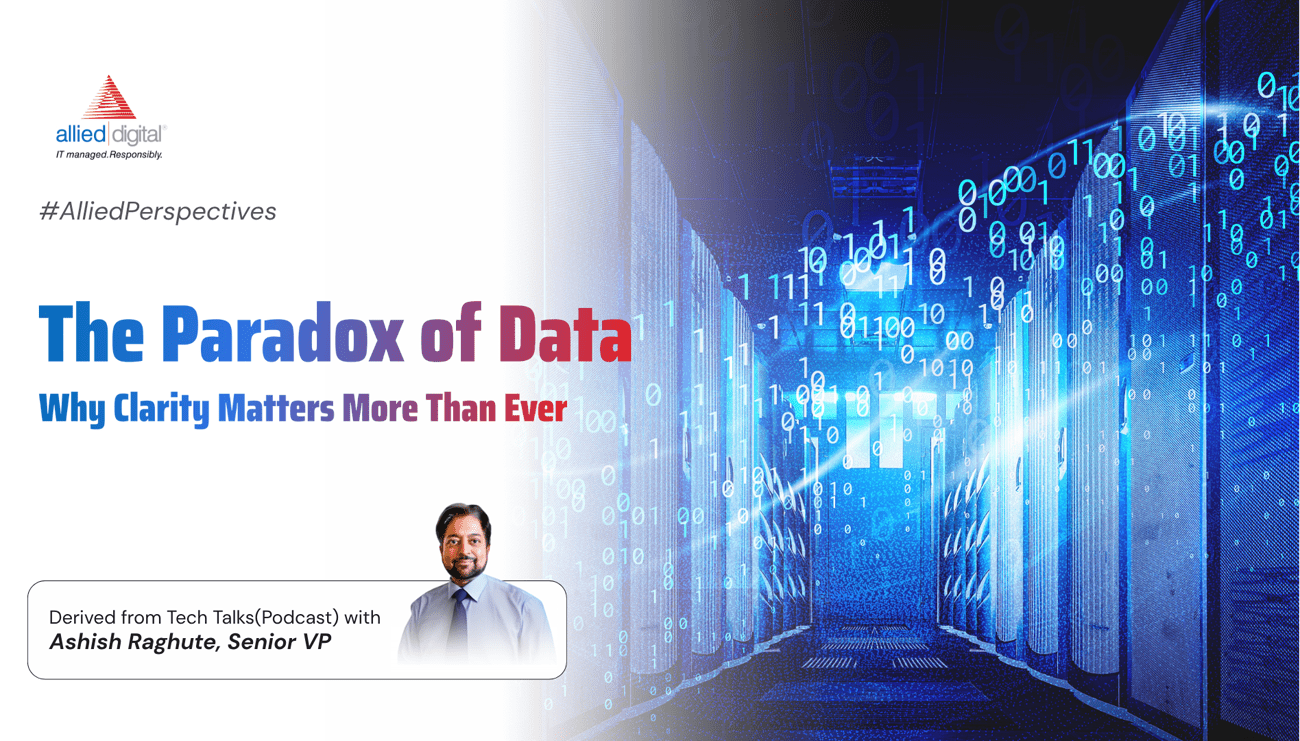The Paradox of Data: Why Clarity Matters More Than Ever

This blog is derived from a byte from Tech Talks by Allied Digital.
In the age of digital transformation, data is often seen as the ultimate currency. Leaders across industries chase more metrics, more logs, more dashboards believing that more data equals more control. But as Allied Digital’s recent Tech Talk revealed, this assumption is not only flawed it’s dangerously misleading.
One statistic shared during the session was particularly eye-opening: nearly 70% of observability data isn’t used at all. It simply sits idle, consuming budget, bandwidth, and storage without delivering any real value. This surplus of data doesn’t empower it overwhelms. As the volume grows, the signal becomes harder to detect, and teams find themselves drowning in noise.
“We’ve all been there,” the speaker admitted. “You think, ‘Let’s just capture everything we’ll be fine.’ But the reality is, the more data you hoard, the harder it becomes to find what actually matters.”
The turning point for Allied Digital came with a bold shift in mindset. Instead of defaulting to “collect it all,” they embraced a new philosophy: collect what matters. This wasn’t just a tactical change it was a strategic evolution. By integrating AI into their observability framework, they automated the heavy lifting, filtered out the clutter, and surfaced only the most relevant insights.
Conclusion: From Data Overload to Data Clarity
The lesson is clear: in today’s data-saturated world, clarity trumps quantity. Organizations must move beyond the reflex to gather everything and instead focus on gathering what drives action. With AI as a strategic partner, businesses can transform data from a burden into a beacon illuminating what matters most and empowering teams to act with precision.
At Allied Digital, this shift didn’t just improve operations it redefined them. And for any organization navigating the complexities of modern data, that’s a signal worth following.



